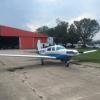Help Diagnose Engine Problem - M20K TSIO-360-MB
-
Members Online
- skydvrboy
- kortopates
- dzeleski
- Derrickearly
- Ragsf15e
- Jerry 5TJ
- LANCECASPER
- Crawfish
- IvanP
- 47U
- FlyingDude
- Jake@BevanAviation
- richardbrochu27
- Anzaldi01
- varlajo
- Jbguns24
- GMBrown
- TCC
- eman1200
- warbingtonmasonry
- Griswold
- Hawth200
- EKoS
- Dwb62
- Greg Ellis
- wombat
- glbtrottr
- PT20J
- 802flyer
- PeteMc
- daytonabch04
- rklems
- Ron McBride
- Steve Hughes
- phxcobraz
- Grumpy
- Meshach
- Fritz1
- 52Yankee
- InJuRo
- DonMuncy


Recommended Posts
Join the conversation
You can post now and register later. If you have an account, sign in now to post with your account.